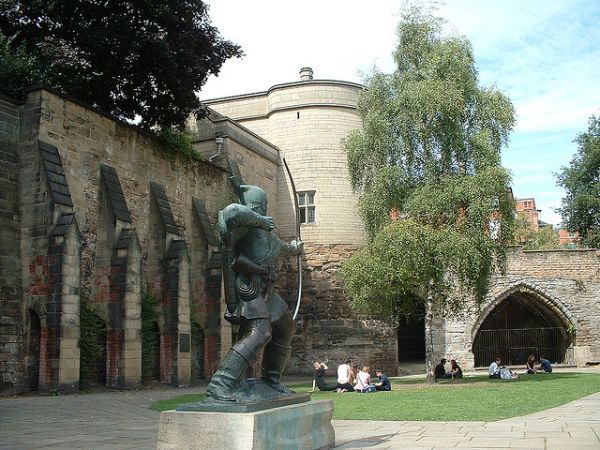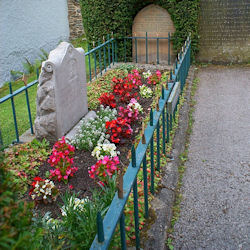
Nottinghamshire, a county near the heart of England contains the (not so) small village (city) of Nottingham. There, a rogue and his band of merry men are said to have robbed from the rich and to have given to the poor possibly as far back as the 12th century. A lot has happened in the ensuing centuries, and Nottingham has become much, much more than a backdrop for a dramatic story.
We’ll start with what everyone’s most interested in anyway: Robin Hood. A young yeoman, Robin Hood becomes an outlaw after numerous run-ins with the law. Seeing the poor suffer even as the rich became richer, Robin seeked to find balance by robbing from the rich and giving to the poor. He enlisted the help of Little John, his second in command, after besting him in a duel of staffs. John, Friar Tuck, and his merry men aided Robin Hood in his undertakings, all the while taunting and running from the crooked Sheriff of Nottingham.
Okay, so everyone’s familiar with the story, but how much of it is really on the up and up? Believe it or not, many historians are totally cool with the idea of there once being a dude in tights running around Sherwood forest being all outlawish. While the earliest recorded stories and mentions of Robin Hood date back to the 1400’s, some historians place him as far back as the 12th century.
The green gallivanter may have also been an amalgamation of various infamous outlaws of the time. Little John likewise may have a basis in history, or be a representative character of the men who aided Robin Hood in his deeds. Despite this, he is the only one of the two to have an (alleged) actual grave site.

It is located in Hathersage, Derbyshire, England in a churchyard. It is said that the grave was exhumed in the 18th century, revealing the bones of a man at least seven feet in stature. Robin Hood wasn’t so lucky. He has supposed grave sites in a number of places in England, with little to no proof to back any of them up. There’s also little proof to back up the existence of Friar Tuck. The earliest friars came after the time of Robin Hood.
The settings of Robin Hood’s tales are also real. In the aforementioned Nottinghamshire can be found the Sherwood forest. This would be the forest that the merry men reputedly used as their hideout from the Sheriff of Nottingham.
Located therein is the famous Major Oak. This is the specific area the merry men made their base of operations, according to legend. That legend would be completely, terribly wrong. Experts estimate that the tree was nothing more than an acorn taking root at the time Robin Hood was running about. The tree’s age and impressive stature is most likely the reason this legend came to be.

At the heart of Robin Hood’s story is Nottingham, and it’s definitely real. It’s also definitely grown since Robin’s time. Nottingham may have been settled as far back as the year 600, although it did not receive city status until 1897. The famous Nottingham Castle was constructed in 1067 and, although largely destroyed, parts of the original lower reaches of the castle survive today.
Nottingham has become a thriving city of over 300,000 residents. The burgeoning city exploded in size during the industrial revolution through the textile industry. Nowadays, the city is home to many well-known companies such as Speedo, Siemens, capital One and others. The city also has two major universities servicing over 60,000 students, and major art and sports facilities.
It all leaves two questions in my mind: What would Robin Hood make of Nottinghamshire today? And why can’t I stop picturing Robin Hood in a speedo? I guess we will never know…
